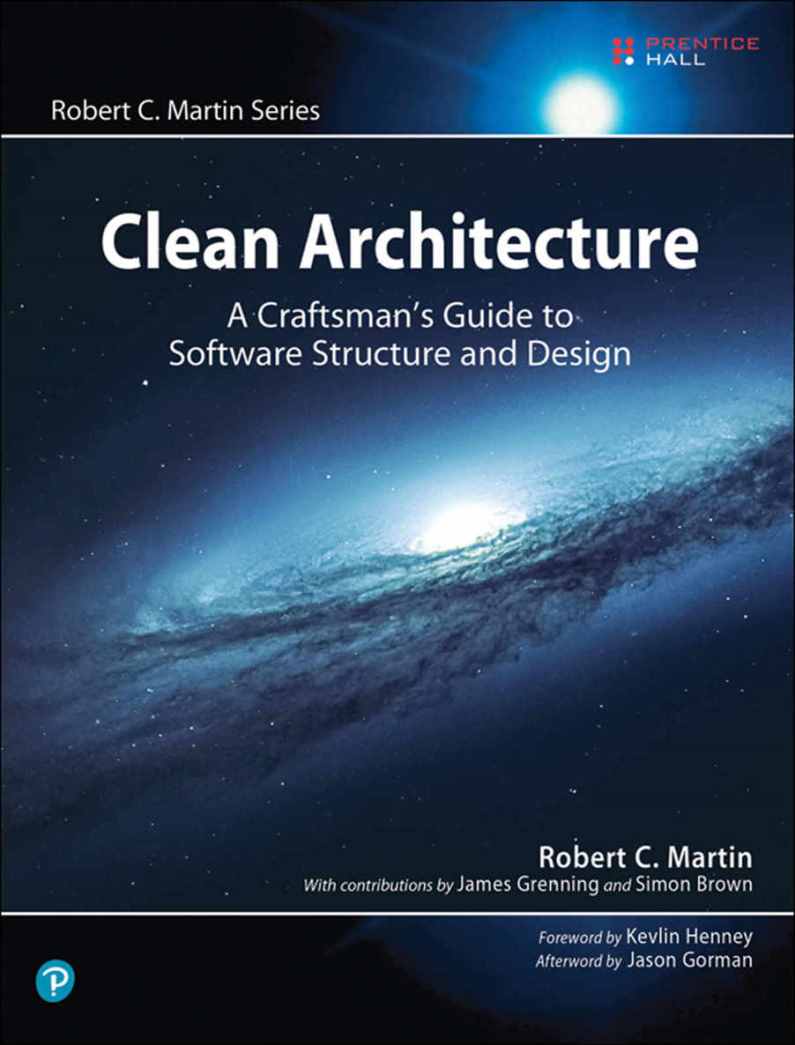Clean Architecture

A Craftsman's Guide to Software Structure and Design
Robert C. Martin
Published: 2017
ChatGPT's summary
Genre: Software Design / Architecture / Programming Best Practices
Core Idea: Good architecture enables change. It should make the system easy to understand, develop, and maintain—now and in the future.
✅ Main Premise:
Software architecture isn’t about specific frameworks or tools—it's about how components are organized and how dependencies are managed. Uncle Bob introduces principles that allow software systems to be flexible, maintainable, testable, and independent of frameworks, UI, databases, and external systems.
🧱 Core Concepts & Lessons
1. The Goal of Architecture
- The primary purpose of software architecture is to enable change.
- A good architecture allows you to delay decisions about frameworks, databases, and other details.
- It maximizes the lifespan of the software.
2. Separation of Concerns
-
Keep business rules (logic) separate from:
-
UI frameworks
- Databases
- External systems (like web services or file systems)
- This separation ensures your core logic is testable and stable even if technologies change.
3. The Clean Architecture (Onion/Circle Model)
At the center is your core business logic. Around it are layers of less-critical, more changeable components.
🧅 Layers:
- Entities – Business rules, enterprise logic, core data structures.
- Use Cases (Interactors) – Application-specific rules (e.g. user actions, workflows).
- Interface Adapters – Transforms data from the format your use cases need to the format your external systems (e.g. DB, web, UI) use.
- Frameworks & Drivers – UI, databases, external APIs, devices.
🧭 Rule: Dependencies always point inward—outer layers depend on inner layers, never the reverse.
4. The Dependency Rule
“Source code dependencies must point only inward, toward higher-level policies.”
This allows core logic to remain untouched even as external systems change (e.g. switching databases or UI frameworks).
5. The SOLID Principles
Uncle Bob recaps and reinforces the SOLID principles (covered in earlier works), emphasizing their role in achieving clean architecture:
- S – Single Responsibility
- O – Open/Closed
- L – Liskov Substitution
- I – Interface Segregation
- D – Dependency Inversion
These principles guide class design and system decomposition.
6. Frameworks Are Tools, Not Foundations
- Don’t let frameworks dictate your system’s design.
- Use them as tools, not the architectural center.
- “Don’t tie your core business logic to Angular, Spring, or Django.”
7. Databases Are Details
- Your system should work regardless of the database used.
- Treat databases as external systems that you can swap without rewriting core logic.
8. Use Cases Drive the System
- Design around use cases, not data models or UI screens.
- Think in terms of user interactions and business workflows, then build outward.
🧾 Who Should Read This?
- Software architects, senior developers, and tech leads
- Developers designing scalable, long-lived systems
- Anyone frustrated with tight coupling or unmaintainable codebases
⚖️ Key Benefits of Clean Architecture
- High testability
- Ease of maintenance and extension
- Framework independence
- Improved team collaboration (clear separation of responsibilities)
- Code that survives tech churn (new frameworks, tools, etc.)
🔁 Comparison: Clean Code vs. Clean Architecture vs. The Clean Coder
| Feature | Clean Code | The Clean Coder | Clean Architecture |
| Focus | How to write readable, maintainable code | How to behave like a professional | How to structure systems for longevity |
| Level | Code-level (functions, classes) | Team/process-level | System-level (components, layers) |
| Main Concern | Readability, simplicity | Responsibility, discipline | Modularity, testability, flexibility |